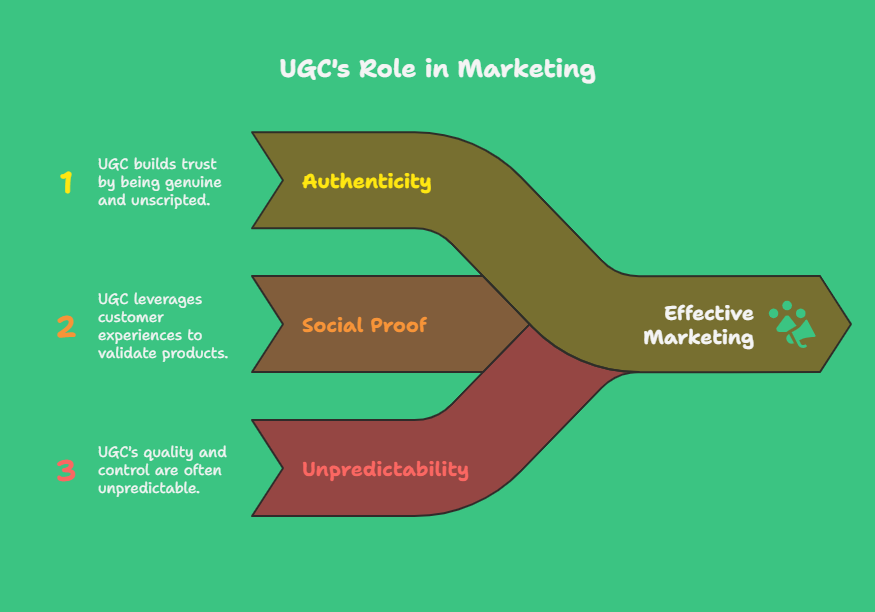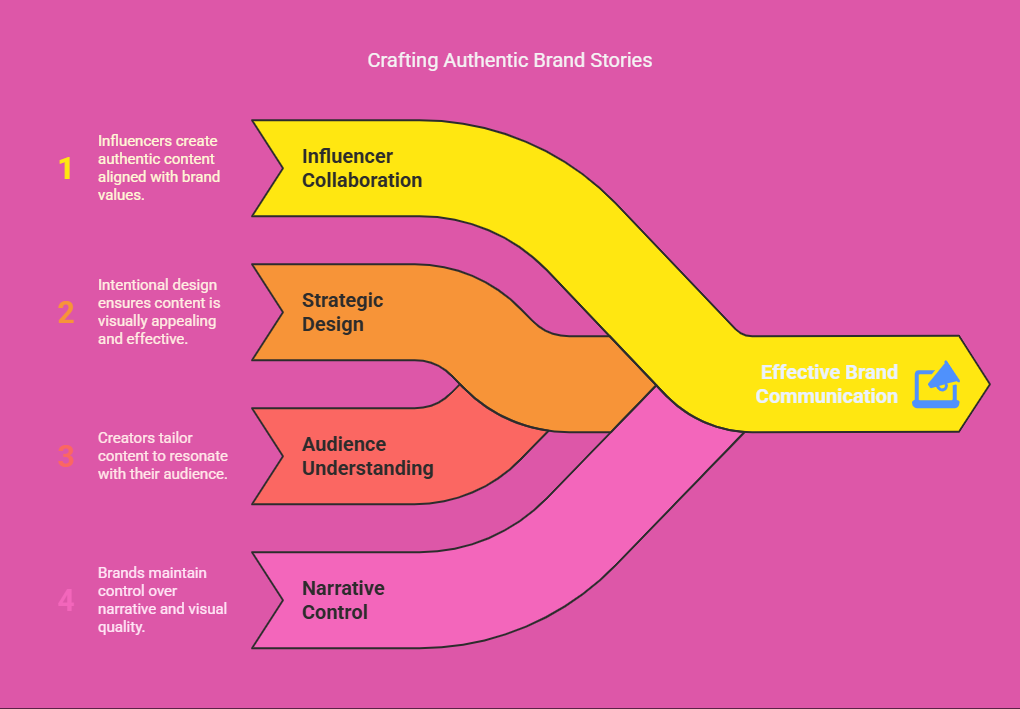
30 Jun 2025
UGC vs CGC: Which One Really Boosts Your Brand in 2025?
Table Of Content
Table of Contents
Scroll through the Instagram of your favorite brand, and you are likely to find two kinds of content: one that seems raw and spontaneous and another that’s polished but still intimate. One could be a passionate customer raving about a new product. The other? A creator paid to do the same, only with better lighting and editing.
These two formats are now commonly referred to as User-Generated Content (UGC) and Creator-Generated Content (CGC), respectively. And though they might seem the same at a first glance, the UGC vs CGC distinction has never mattered more, particularly in 2025’s trust-driven, creator-led environment.
What Is UGC? (User-Generated Content)
User-Generated Content (UGC) refers to content, such as posts, videos, reviews, and testimonials, that is not paid for or professionally created; instead, it is written or created by customers or users themselves. It’s raw and unscripted, and often emotionally honest. It includes unboxing videos, real-life results, or casual Instagram mentions.

UGC works because it utilizes social proof. It doesn’t sell—it shares. Authentic marketing content fosters trust, a vital asset in a world where people are growing increasingly skeptical of advertising and brand messages. But UGC, for all its realness, has also been frequently unpredictable in terms of quality or control, proving difficult to scale within professional campaigns.
What Is CGC? (Creator-Generated Content)
Creator-Generated Content sits between traditional ads and raw customer feedback. It’s posted by influencers, content creators or micro-creators who are financially compensated or otherwise directed to produce content for a brand — and yet, somehow, doesn’t look or feel as if it’s a conventional ad.
What sets CGC apart is the balance it strikes: It appears native to social platforms, but it is not casual — it is intentionally created, styled, and strategically designed. Creators understand what resonates with their audience—and know how to wrap a brand’s message into content that actually performs.

In contrast to UGC, CGC offers brands greater control over narrative, tone, and visual quality. You know what is being said, how it looks, and when it was posted. And because it’s made for marketing, it’s easier to repurpose across ads, websites, and email.
UGC vs CGC: Why the Difference Matters for Brands
In today’s content-saturated world, authenticity sells — but so does clarity. If you use user-generated content only, you end up with real voices but inconsistent delivery. Depending solely on creator-generated content might polish your image but risk losing relatability.
Leverage UGC to create community and trust. Find ways to get real customers to share their experience, and share that voice across your platforms. When you want storytelling, strategy, and scale, bring in CGC. Partner with creators who align with your values and can bring your brand to life in ways your audience already consumes.
Let’s take Airbnb as an example. Much of its growth has been fueled by travelers posting unfiltered photos and heartfelt reviews—real people sharing real experiences. That’s user-generated content working at its best. But when Airbnb wants to spotlight a destination, promote new features, or tell deeper stories, it brings in creators who can craft cinematic, narrative-rich content. Their traction doesn’t stem from picking one over the other — but from using both to create a brand that’s human, aspirational, and trusted.
Social Media Content Strategy: Blend Realness With Strategy
The most powerful social media content strategies today don’t choose between UGC or CGC — but rather, find the middle ground between them. One offers truth. The other offers traction. Combined, they add both credibility and reach to your brand. Both are help brands build authentic marketing content that feels relatable and trustworthy to audiences.
FAQs
1. What is the difference between UGC and CGC?
The difference between UGC vs CGC lies in who creates the content and how it’s delivered. User-generated content (UGC) is raw, unscripted, and created by real customers, while creator-generated content (CGC) is produced by paid creators who know how to style, edit, and strategically design content that performs.
2. Why is user-generated content important for brands?
User-generated content works because it builds trust through authenticity. It doesn’t sell—it shares. Reviews, unboxing videos, and casual mentions show real experiences, making people believe in a brand more than polished ads ever could. This kind of authentic marketing content is what customers value most.
3. How does creator-generated content help in social media content strategy?
Creator-generated content gives brands control over narrative, tone, and quality while still looking native to platforms. Because creators understand their audiences, CGC fits naturally into a social media content strategy, making it easier to repurpose across ads, websites, and emails.
4. Should brands use UGC or CGC?
Smart brands don’t choose between UGC or CGC—they use both. UGC builds community and credibility, while CGC adds professionalism, storytelling, and scale. Together, they blend realness with strategy.
What is the role of influencer marketing vs UGC?
In influencer marketing vs UGC, influencer or creator-led content can give brands reach and polish, while UGC adds unfiltered honesty. The strongest brands combine both so their marketing feels relatable and professional at the same time.
4. Which brand uses both UGC and CGC?
Airbnb is a great example of a brand that uses both. Its community-driven growth comes from travelers posting authentic photos and reviews — that’s user-generated content (UGC). At the same time, Airbnb works with creators to produce cinematic videos and polished campaigns — that’s creator-generated content (CGC). By blending both, Airbnb builds trust while still delivering strategic, professional storytelling.
Also Read:- Top WordPress SEO Tools
Leave a Reply
Your email address will not be published. Required fields are marked *












Comments